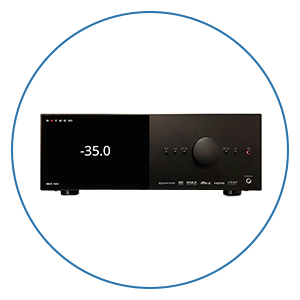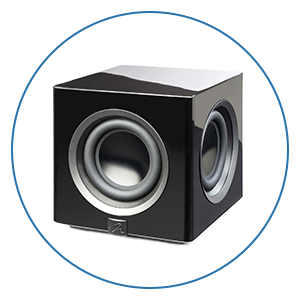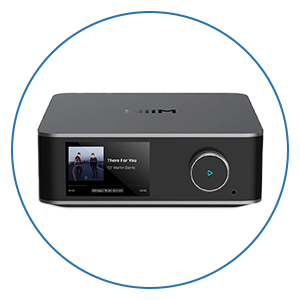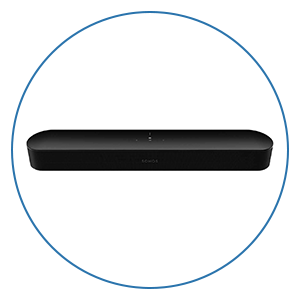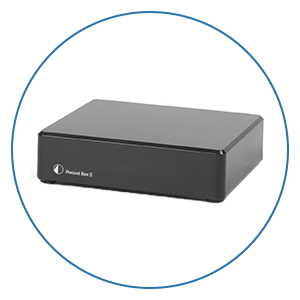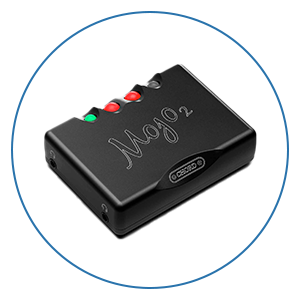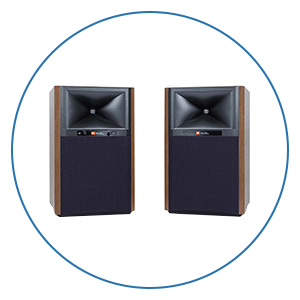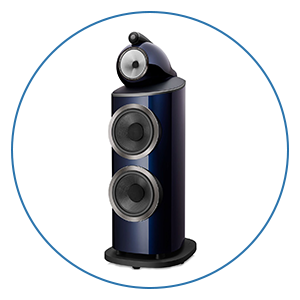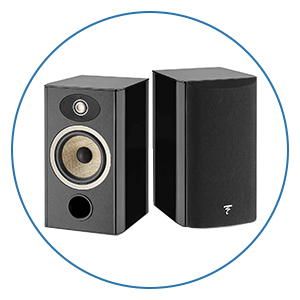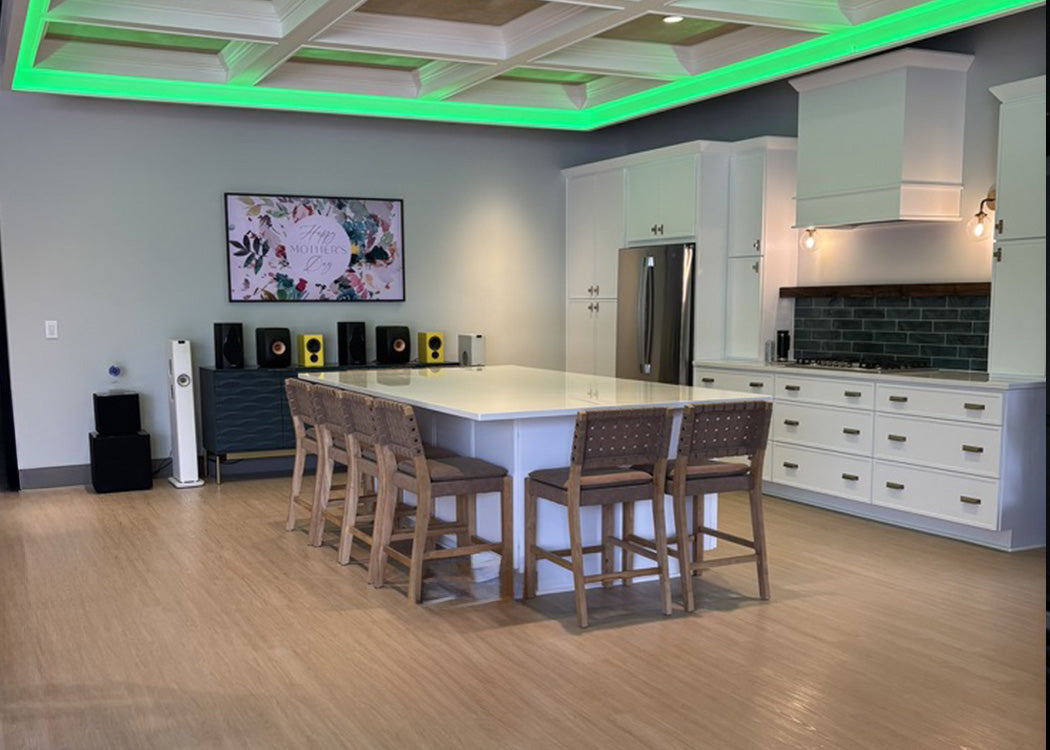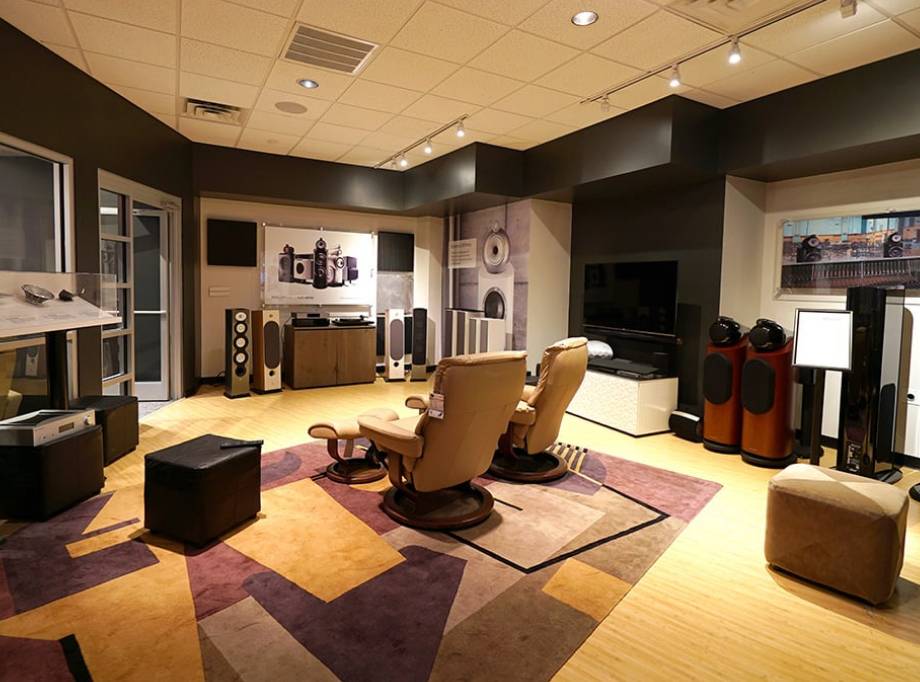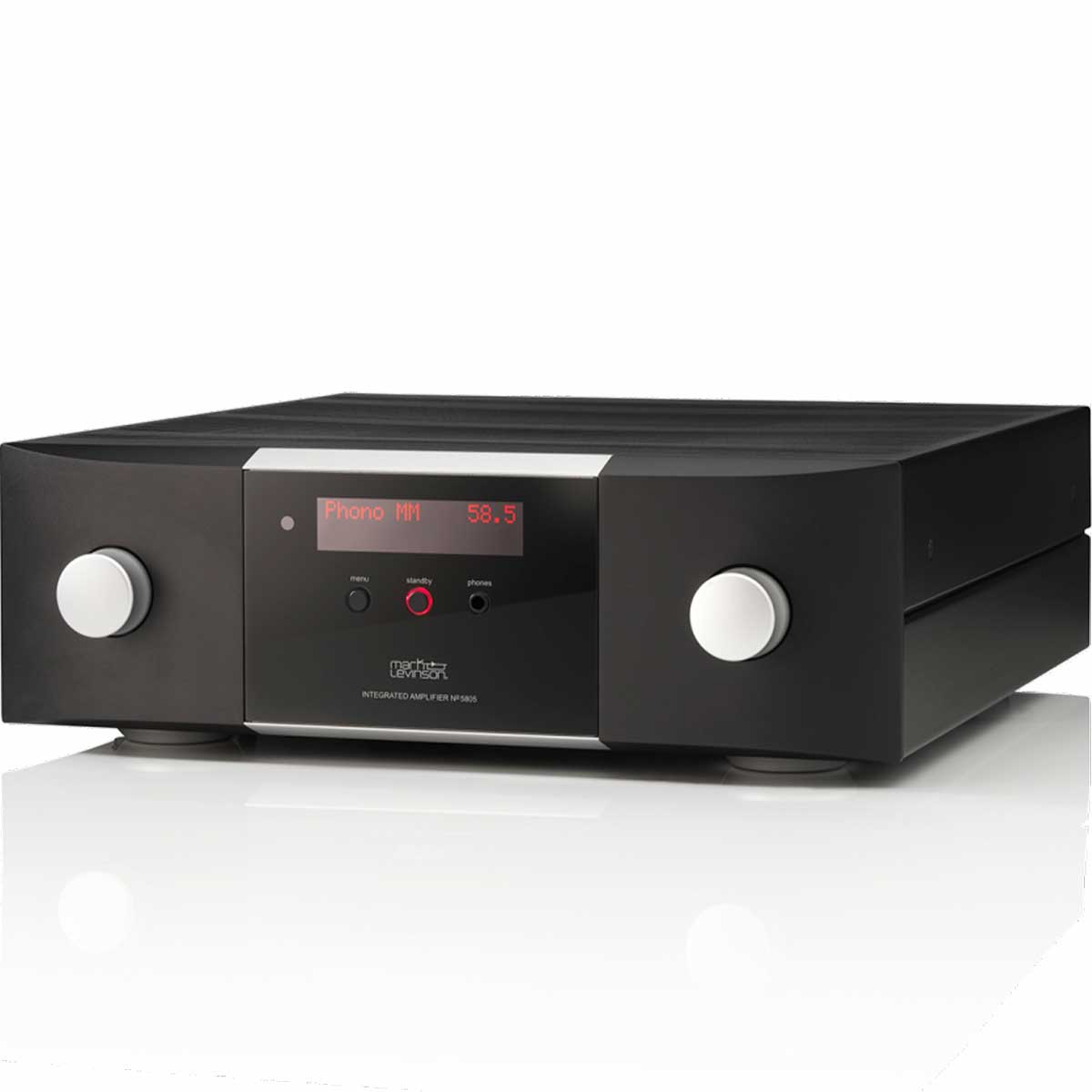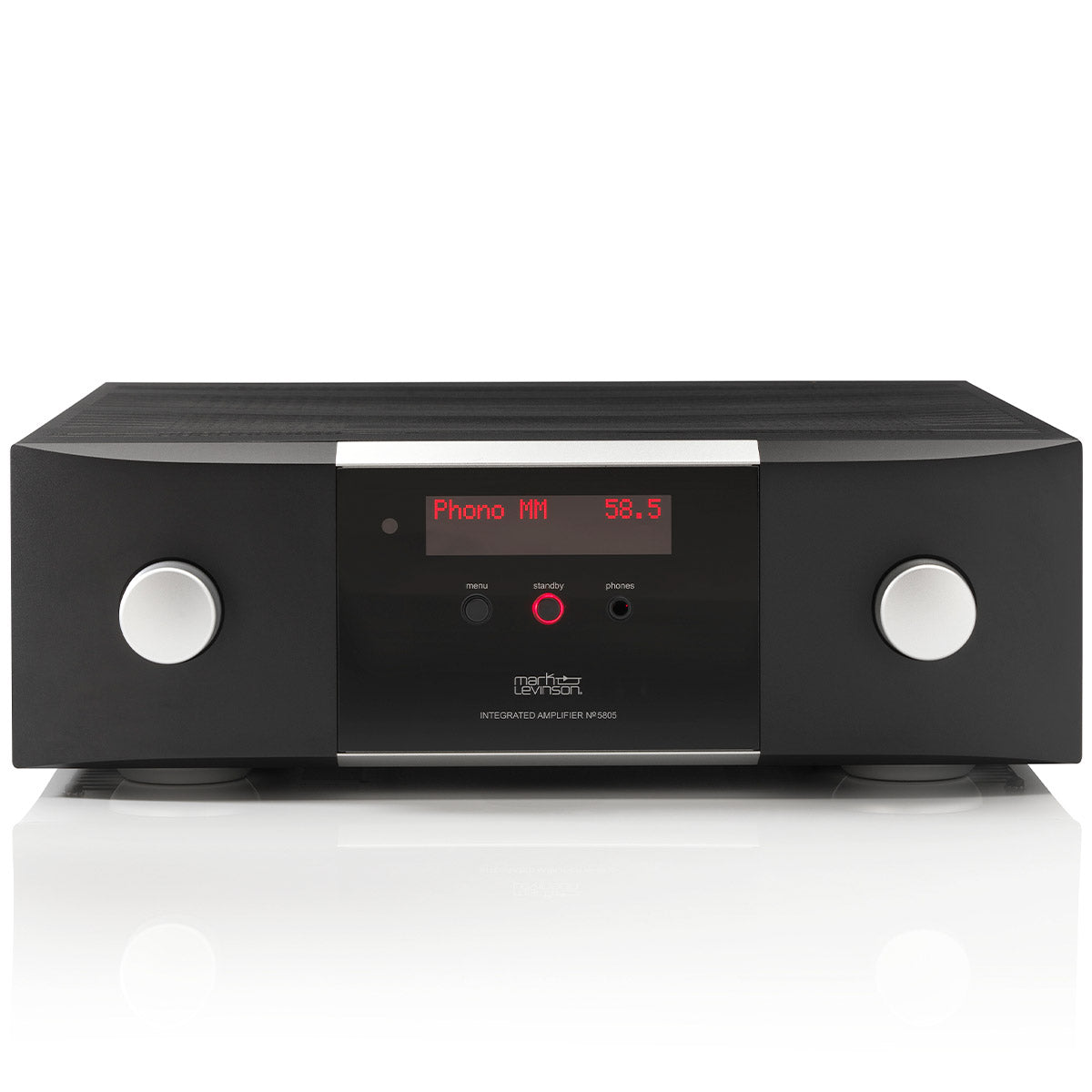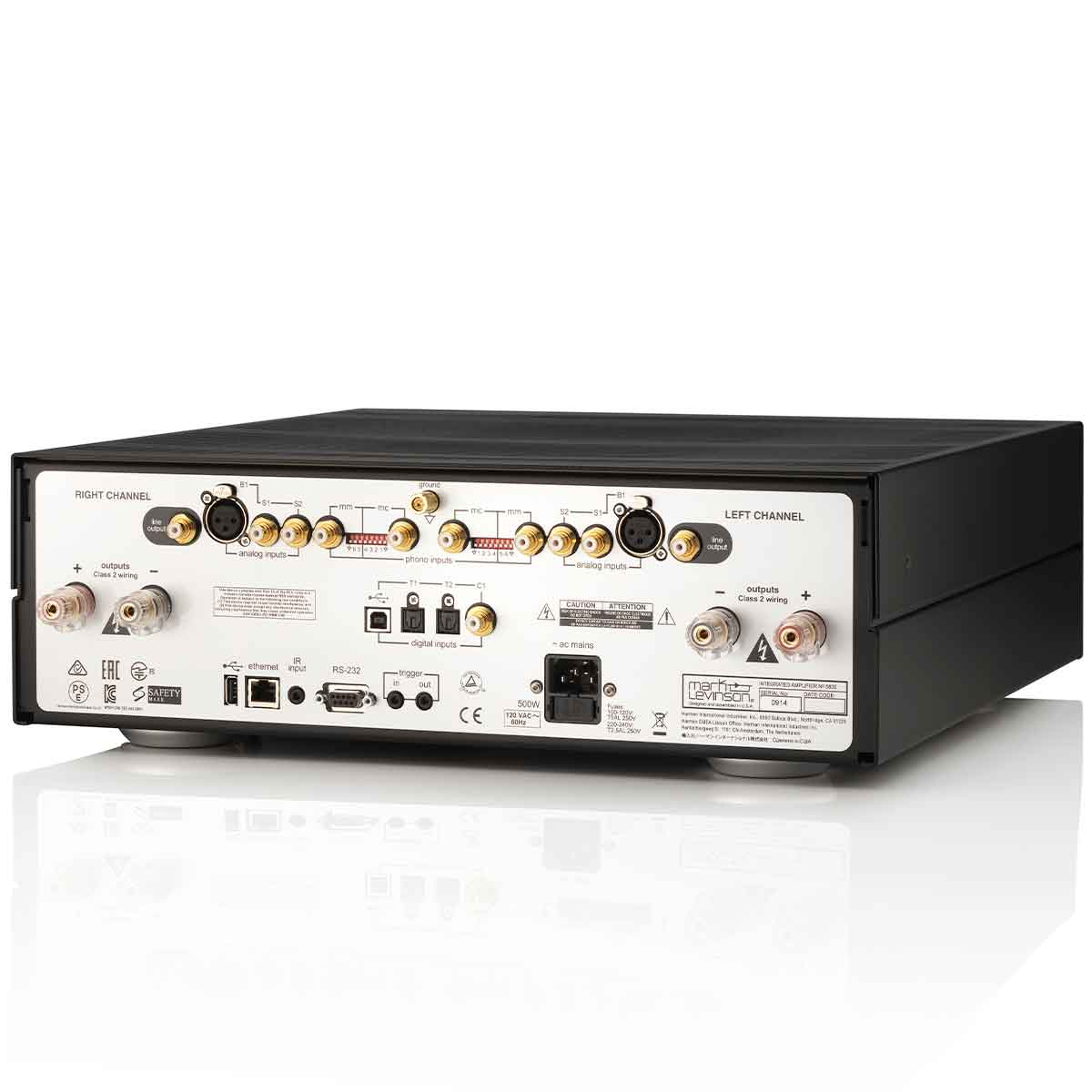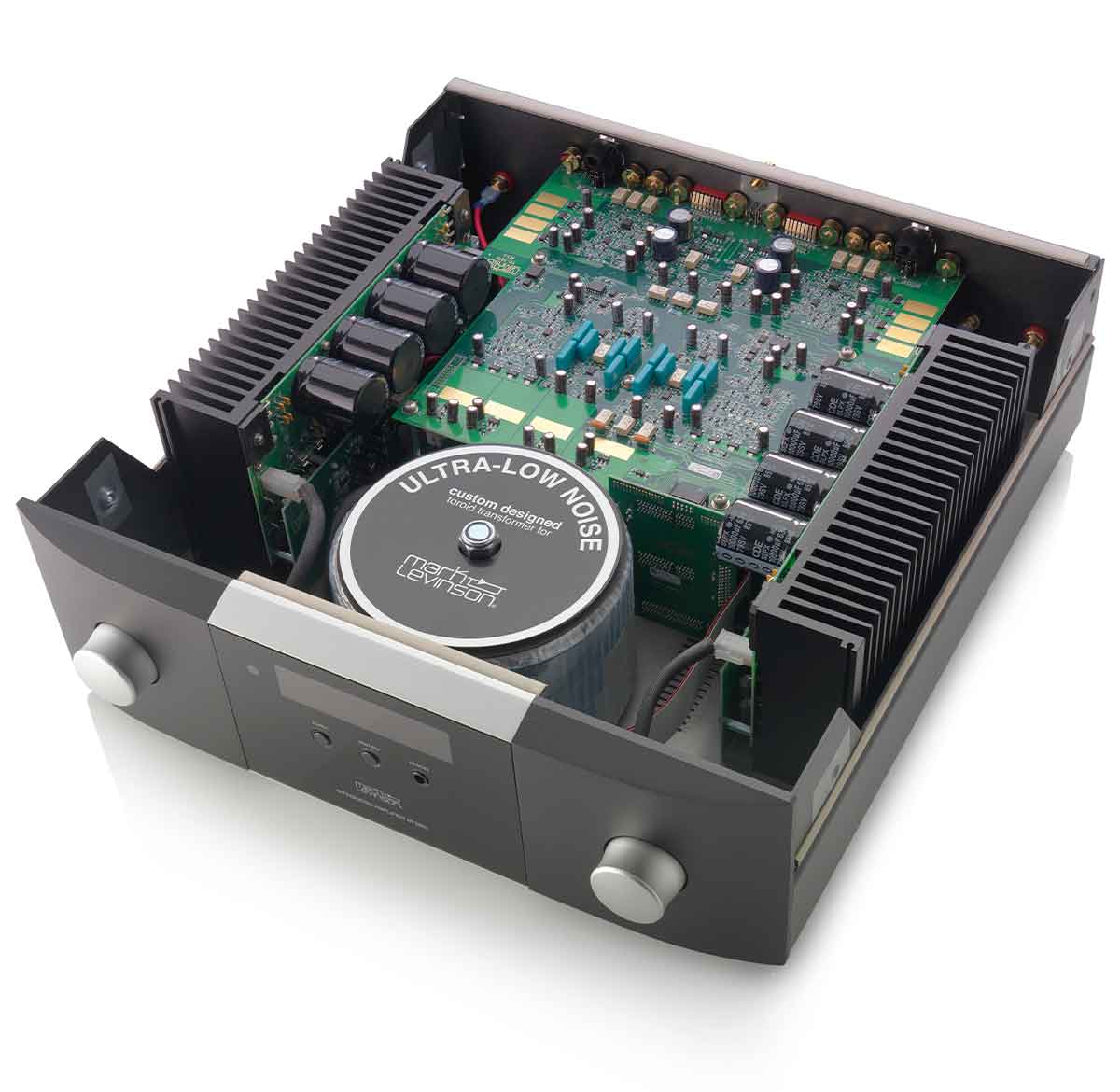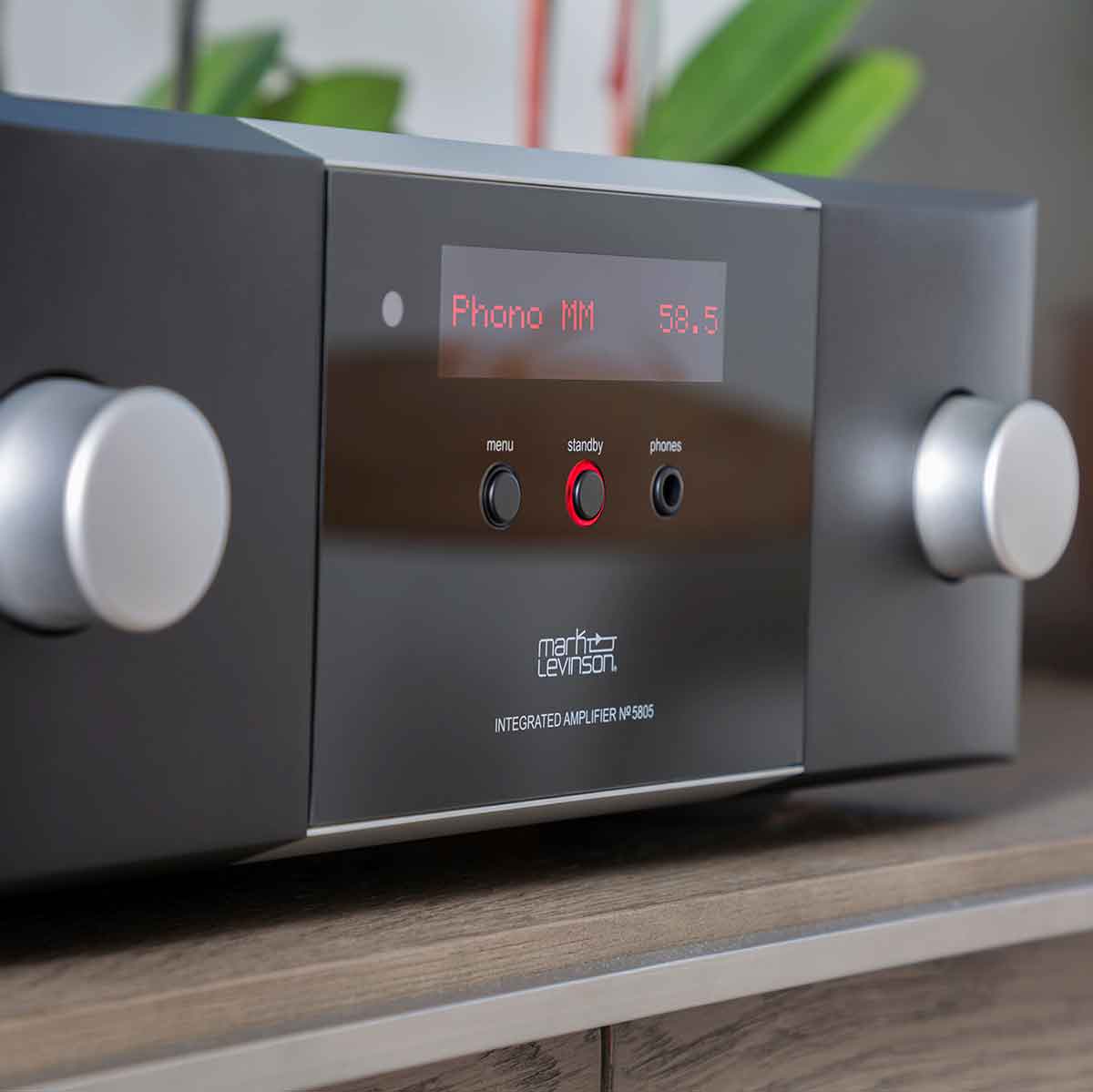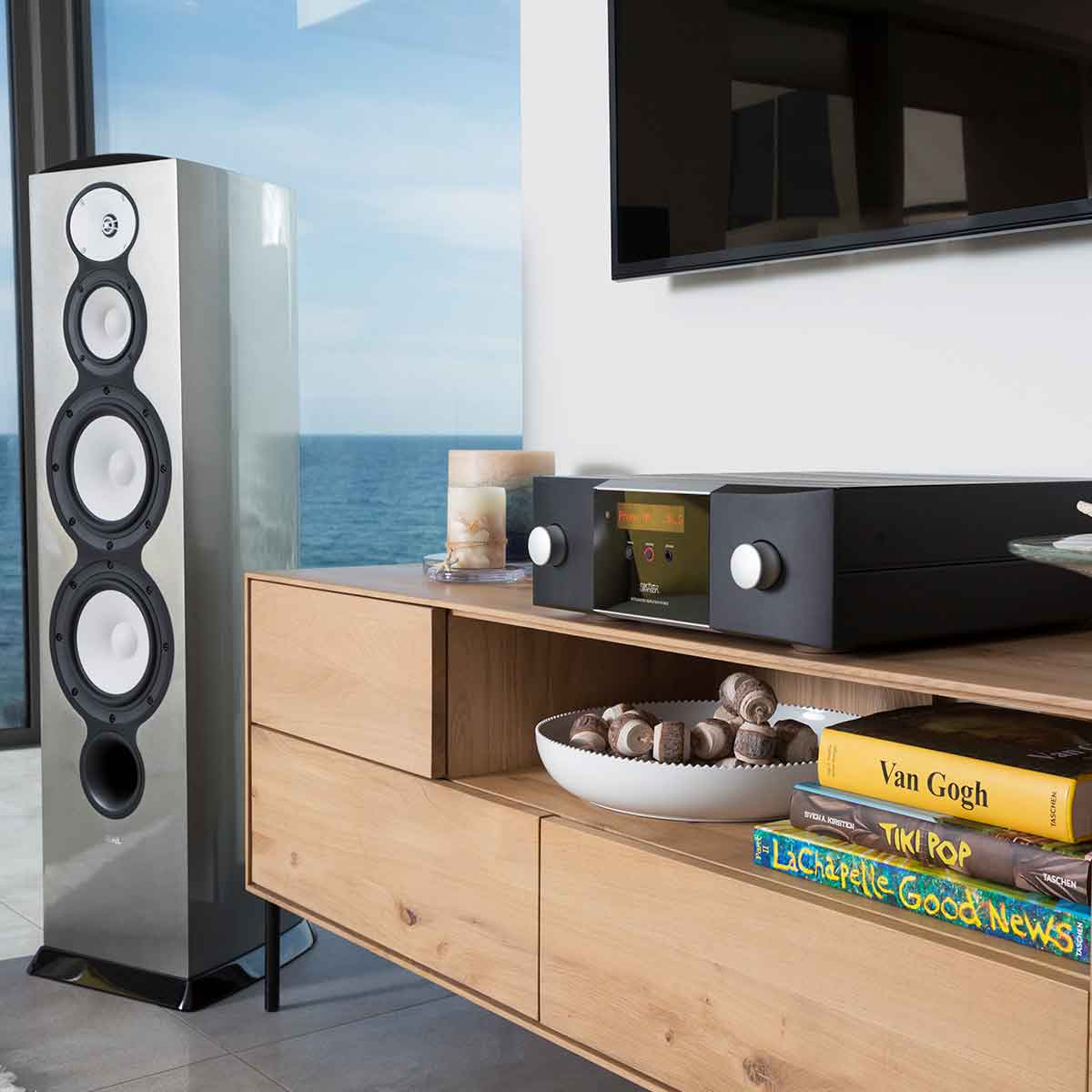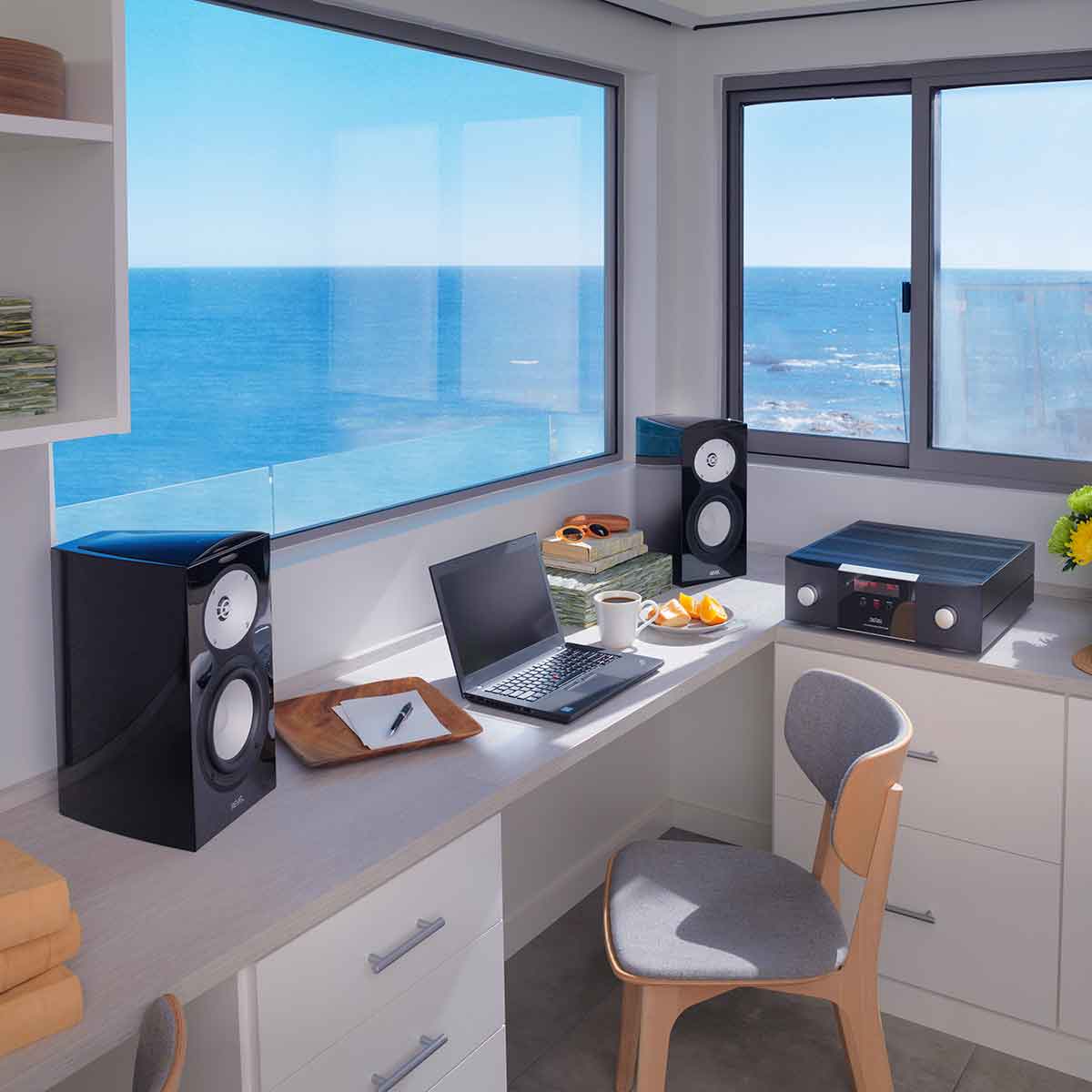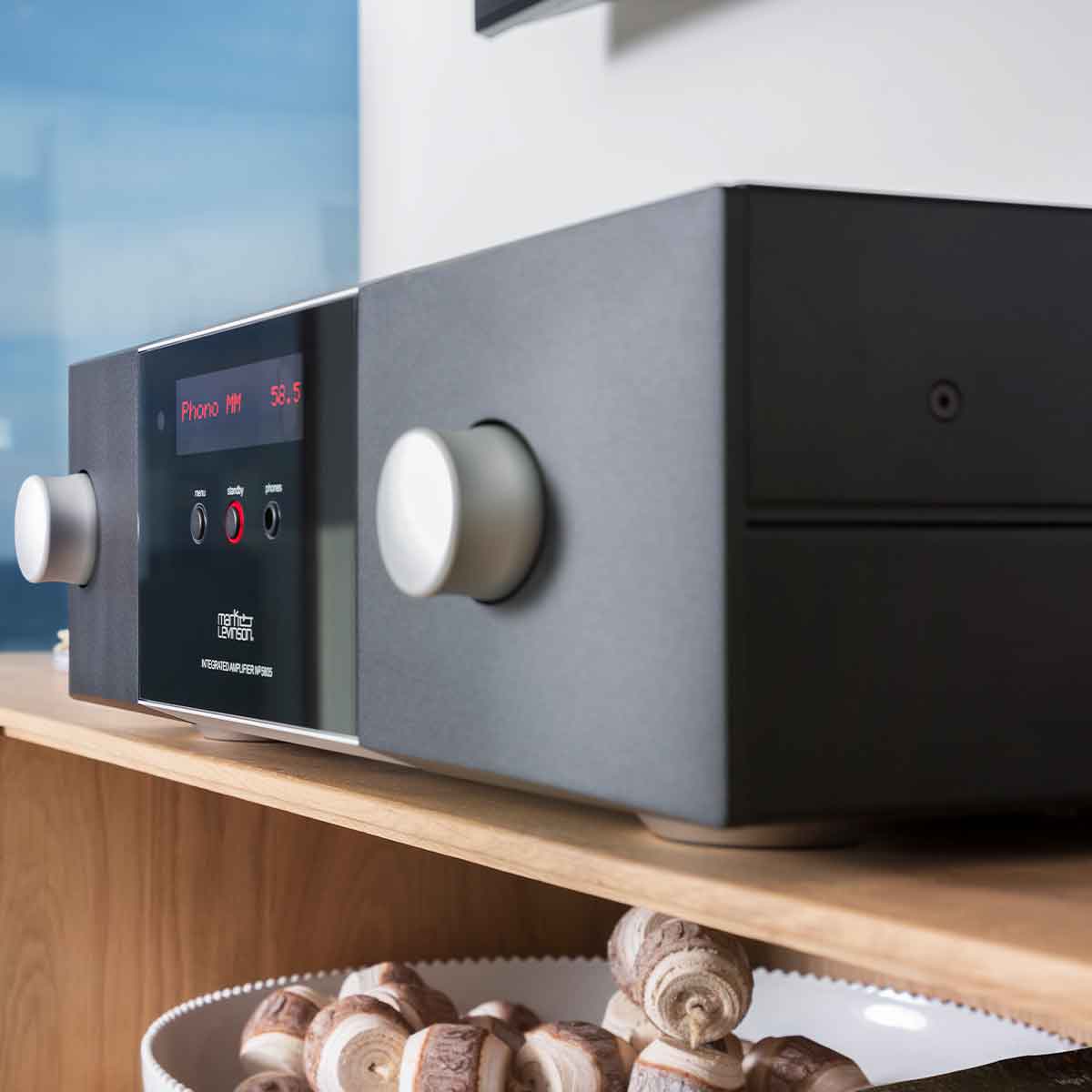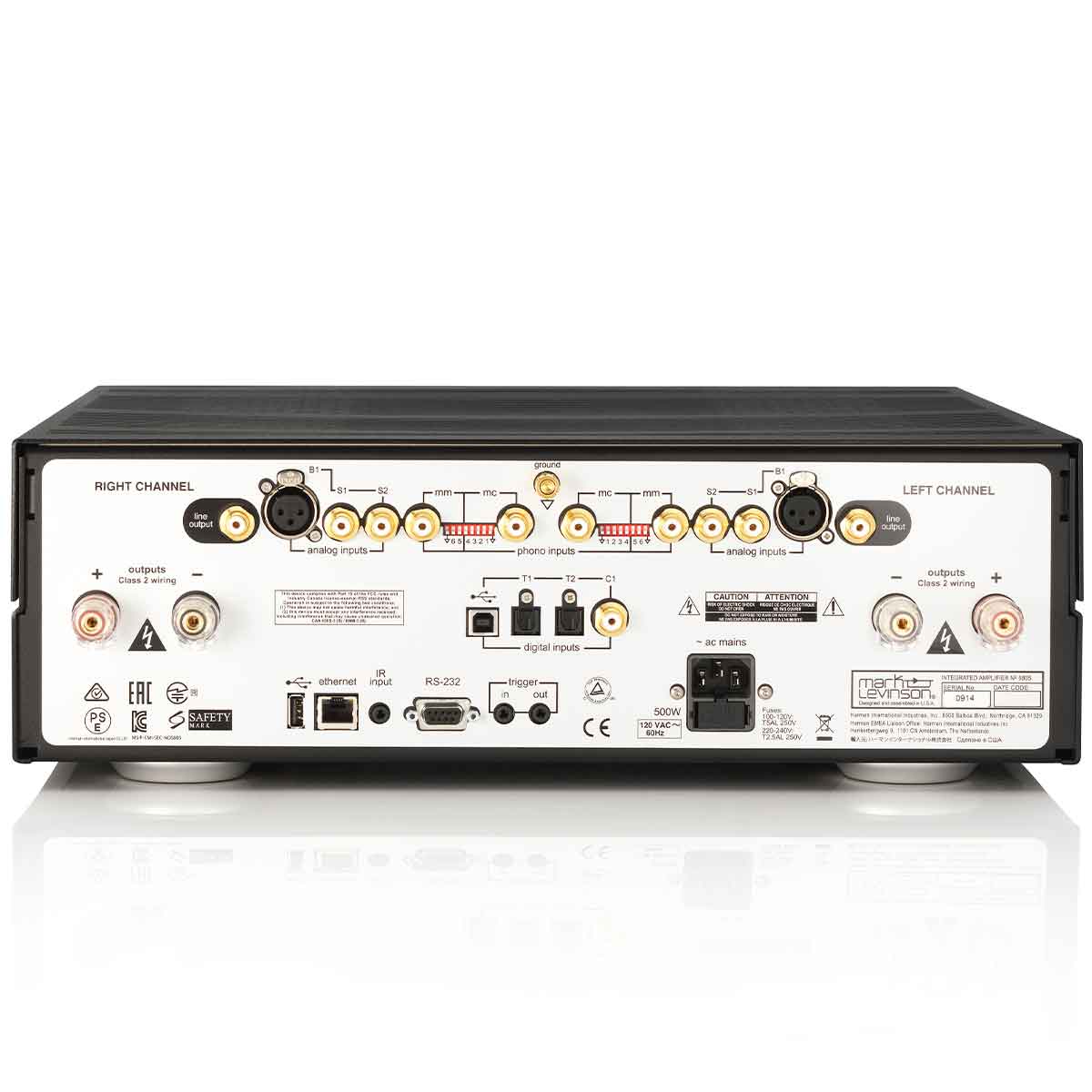Mark Levinson No. 5805
Couldn't load pickup availability
Free Shipping On All Orders, No Minimums.
We offer free 2-day shipping on most products within the continental US.
Weekdays - Orders placed by 2pm EST ship same day. Orders placed after 2pm EST will ship the following business day.
Weekends - Orders placed on Saturday and Sunday will ship Monday.
Orders requiring motor freight delivery may take more than two business days. Once your order has shipped, you'll receive a shipping confirmation email with a tracking number for easy tracking.
Orders that contain items that are currently backordered, special order, or out of stock will ship complete once all items are in-stock unless otherwise requested.
If you need it faster, you will have the option of choosing a quicker shipping option when you checkout on the website.
At this time, we do not ship internationally and orders to Hawaii and Alaska may incur an additional shipping charge. Please contact us at 888.899.8776 or email support@audioadvice.com to confirm.
Rerouting and Address Changes
We cannot make ANY address changes once an order is placed. If you are unable to accept delivery of your package as ordered, we will need to cancel your order, return the package to sender and have you replace your order through our website.
Keep the Box
We suggest you keep the shipping box or boxes for at least 30 days. It is actually a great idea to keep boxes for audio products for the life of the product. Having the box and all packing will increase the trade-in value should you decide to move up and they are handy to have should you ever need to send the unit in for repair.
How To Receive a Motor Freight Order
The trucking company will contact you to schedule a convenient time to deliver the order. Please note that you must be present for delivery.
Visually inspect the box to make sure you see no signs of damage. If you notice any damage at all, take some pictures with your phone and make a note of them on the delivery receipt the driver will ask you to sign. If it is obvious that the product is damaged, please refuse the order and contact us immediately at 888.899.8776 or email support@audioadvice.com.
Open your box as soon as possible and inspect the product for damage and contact us if you find anything wrong.
FedEx Freight Service Comparison
| Feature / Service | Scheduled Curbside Delivery | White Glove Delivery |
|---|---|---|
| Scheduled delivery appointment | ✔ | ✔ |
| Delivery location | Ground level only (garage, front door, loading dock) | Room of choice, any floor |
| Delivery team | 1 person | 2 people |
| Placement inside home/business | ✘ | ✔ |
| Upstairs / downstairs delivery | ✘ | ✔ |
| Unpacking | ✘ | ✔ (upon request) |
| Packaging removal | ✘ | ✔ (upon request) |
| Assembly / installation | ✘ | ✘ |
| Old item removal | ✘ | ✘ |
At Audio Advice, we pride ourselves on customer satisfaction. We'll bend over backward to make sure you're 100% satisfied and we won't accept anything less. We offer 30-day hassle-free returns and personalized service from real, live people.
If an item doesn't meet your expectations, you may return or exchange it in its original condition and packaging within 30 days for a full refund, minus shipping fees. Items shipped back in like new condition through standard shipping carriers will only incur a flat fee of $15 to return. If the items were initially shipped through free scheduled delivery via motor freight (commonly referred to as LTL), returning them will result in return shipping fees starting at $150. These items include but are not limited to, oversized items such as TVs, certain subwoofers, floorstanding speakers, furniture, and most items weighing over 75 pounds. Return fees will also apply for exchanges. We want to treat your system as if it is our own and want you to be completely satisfied with your purchase.
Please see the instructions below. We only accept returns for any product purchased directly from our website. If merchandise is not returned in its original condition or is missing packaging, manuals, accessories or other parts, or the resale value of the product has been impaired, a partial refund will be given and calculated on a case-by-case basis.
Non-Returnable Items
The following items cannot be returned or cancelled:
- Special/Custom Order Items
- Open Box Products
- Gift Cards
- In-ear headphones cannot be returned once the packaging has been opened due to personal hygiene reasons. Please contact our customer care team if you'd like help choosing.
-
Turntables With a Broken Stylus: All turntables ship out with the stylus intact. If you return a turntable or phono cartridge with a broken or missing stylus you will be subject to a return fee. Please be careful when setting up your turntable and contact us with any questions.
Is It Easy To Return An Item?
Yes, simply give us a call at 888.899.8776 or you can email our support team at support@audioadvice.com. Many times our team of experts can help figure out why the product might not be working like you expected and get things fixed over the phone, so don’t be surprised if we ask a few questions, we love troubleshooting!
If our tech help can not make you happy, we will email over a return shipping label with a Return Number.
Hopefully, you saved all of the original item’s box and packaging inserts. You will want to pack back up your return or exchange in the same way it came out of the original box. Once you have everything packaged correctly, tape the box on the top and bottom to assure it stays together. If Audio Advice shipped the item to you inside a second box, it's a good idea to use that same extra box to help prevent damage on its way back to us. To avoid it accidentally coming back to you, use a magic marker to cross out the old shipping label or just tear it off.
The return shipping label we send you will have our address on it, just make sure you take the box to the right shipper (UPS, FEDEX, or USPS) as per the label.
If you are close to one of our stores, please let us know if it is more convenient for you to return it to us directly. You will still need to get a return number by contacting us and shipping and/or restocking charges may apply.
When Will I See My Refund?
It usually takes around 7-14 days for the refund to show up on the payment method you used. We do inspect all returns for damage and accuracy of the item inside the box before issuing a refund. Some items may be subject to shipping and restocking fees.
Can I Exchange My Purchase For Something Different?
Sometimes those big speakers just don’t fit in the room or you might have bought a small subwoofer and later found out you’d love a bigger one. If you would like to make an exchange within 30 days of receiving your item, just give us a call at 888.899.8776 or email support@audioadvice.com and we will help work out the details. Additional shipping charges and return costs may apply.
How Do I Cancel An Order?
If the item has already shipped out or is a special order item, it is not possible to cancel the order. Please contact us at 888.899.8776 or email support@audioadvice.com to start the return process.
What If I Find Shipping Damage?
We need to know right away about any shipping damage. Please contact us at 888.899.8776 or email support@audioadvice.com within 48 hours of your delivery so we can get the ball rolling on making things right. It’s very helpful to take some pictures and email them to us if possible.
Can I Refuse A Shipment?
You can, but unless the item is damaged, shipping and restocking fees will be deducted from your refund. If your item arrives damaged and you are lucky enough to be there, snap some quick pics and refuse the order. Then contact us so we can get a replacement on the way.
What Happens If My Order Is Defective?
This is actually pretty rare, most consumer electronics work fine out of the box 99.9% of the time. We’d like for you to contact us first by calling 888.899.8776 or email support@audioadvice.com so we can help get to the bottom of things. If your item is indeed defective during the first 30 days, we can usually exchange it for a new, replacement unit.
What About Service After 30 Days?
Audio Advice has a great relationship with all of our brands and can help you with warranty service by the brand after our 30-day guarantee period. Even after the warranty expires, we can arrange for service by the brand on products purchased from Audio Advice. Just call 888.899.8776 or email support@audioadvice.com.
How Do You Determine A Restocking Fee?
You may not believe it, but sometimes we receive items back that were put in the box with zero packaging and are completely destroyed or are missing many of the pieces that came with the item. We also track serial numbers and will get back different serial numbers. We’ve even seen different items than what we shipped out be returned. However, it’s very important to package your return properly so that nothing goes missing or gets damaged in shipping, which will result in a restocking fee or even no refund at all. If a product is opened and the market value of the product is reduced, then a restocking fee may be applied to the cost of restocking and the reduced market value of the product. The bottom line is if you treat us fairly, we will do the same.
Audio Advice strives to provide industry-leading support and service while also maintaining the lowest prices available on products for our customers. We work hard with our vendors to bring our customers the best products at each price point. As a part of that process, we work with our vendors to provide the lowest pricing in our stores and on our website.
Our prices should always be the same as any other authorized dealer, including big-box retailers and major online retailers.
If you believe that you have found a lower advertised price from a legitimate authorized seller, call us and let us know so we can make sure we can correct any inadvertent error on our side. As a matter of policy, we update our prices automatically if a vendor changes its authorized pricing policies, so we generally have the best prices all the time. Increasingly, there are knock-off copies of products online, usually sold by non-authorized dealers.
Please be sure that the item meets the following conditions:
- The item is brand new, in stock, and available for purchase
- The item has the identical model number, color, etc as the item on our site.
- The seller is an authorized dealer
As always, our goal is to provide a terrific customer experience, including industry low prices. We appreciate your support.
Overview
The High Notes
Decades of Tradition
Power and More Power
Designed and Crafted in the USA
Company & Product Overview
Our review today is on two new integrated amplifiers from Mark Levinson, the № 5805 and № 5802. However, before we get to the products, it's important to first know the history of Mark Levinson.
The brand Mark Levinson has a long history of producing some of the best possible audio products. It started out in 1972, when Mark Levinson, who had been working in the recording business in New York City, released his first home audio preamp. His previous designs had been high end sound mixers, so an audio preamp was a natural progression. The next year, his first product, the LNP-1 as followed up with an LNP-2. If you ever run across an LPN-2, you will be stunned by its beautiful VU meters. In 1973, the LNP-2 was a coveted piece of gear, gracing only the finest audio systems of the day. Throughout the ‘70s and early ‘80s, the Mark Levinson brand became the industry standard for best in class preamplifiers and power amplifiers. Madrigal Audio Labs purchased the Mark Levinson brand in 1984 and added some extra financial firepower to the brand. They carried on the tradition of best in class electronics throughout the 1980s and 1990s. As a testament to how well Mark Levinson components were made, many are still in use today and if you are lucky enough to find a used one, it will likely be worth far more than its original selling price.
With their success, Madrigal Audio caught the attention of Harman in 1990 who acquired them that year. The backing of a large, multinational company enabled the brand to continue their no compromise approach. Some of the digital audio products produced by the Mark Levinson brand during the 1990s and early 2000s once again set world class standards.
Samsung purchased Harman International in 2017 and at first we were a bit worried they would try to change things too much. As we spoke to the people at Mark Levinson, our fears were abated and actually we began to smile as we heard about Samsung’s goal to keep investing in their production of world-class audio gear.
For those of you who might be just getting into audio, an integrated amplifier contains a preamp section and a power amp section. In the case of these two models (Mark Levinson № 5805 and № 5802), they also contain Digital to Analog Convertors (DACs) for your digital audio sources. The integrated amps come in two versions, one pure digital and the other offering analog and phono inputs. The № 5805 is the version with analog while the № 5802 is the digital only version. They are priced at $8500, and $7000 which is actually quite a bargain for a Mark Levinson piece of gear.
These new models, for Mark Levinson, represent a much new lower price point. At first we were worried they would do the same thing other audio companies have done to hit a lower price, move manufacturing to a facility somewhere else in the world to save money. However, just like with every other piece of Mark Levinson gear, they are designed in their Sheldon, Connecticut, lab and manufactured in Westford, Massachusetts, even sourcing almost all of the components locally.
These two new models have been a long time coming as we saw them on their roadmap almost four years ago. We had a chance to hear a prototype version of the № 5802 at our 40th anniversary Music Matters event. The sound was just extraordinary and, when we popped the cover off, we could not believe how well made this integrated amp was!
Design & Build Quality
From the very first preamp in 1972 to their products today, Mark Levinson products have always exuded class. Their classic black finish accented with brushed aluminum control points, gives them a look is timeless and elegant. The new № 5802 and № 5805 keep this same great styling. The sculpted black aluminum front panel has two matte finish control knobs on each side. Mark Levinson bead blasts the 1” thick panel before it receives the black anodized finish. The knobs are slightly curved for a great feel. The two control knobs adjust volume and input along with access to settings. In the center is a glass panel that contains the display, the power button, and flanked by a full size headphone jack and menu button.
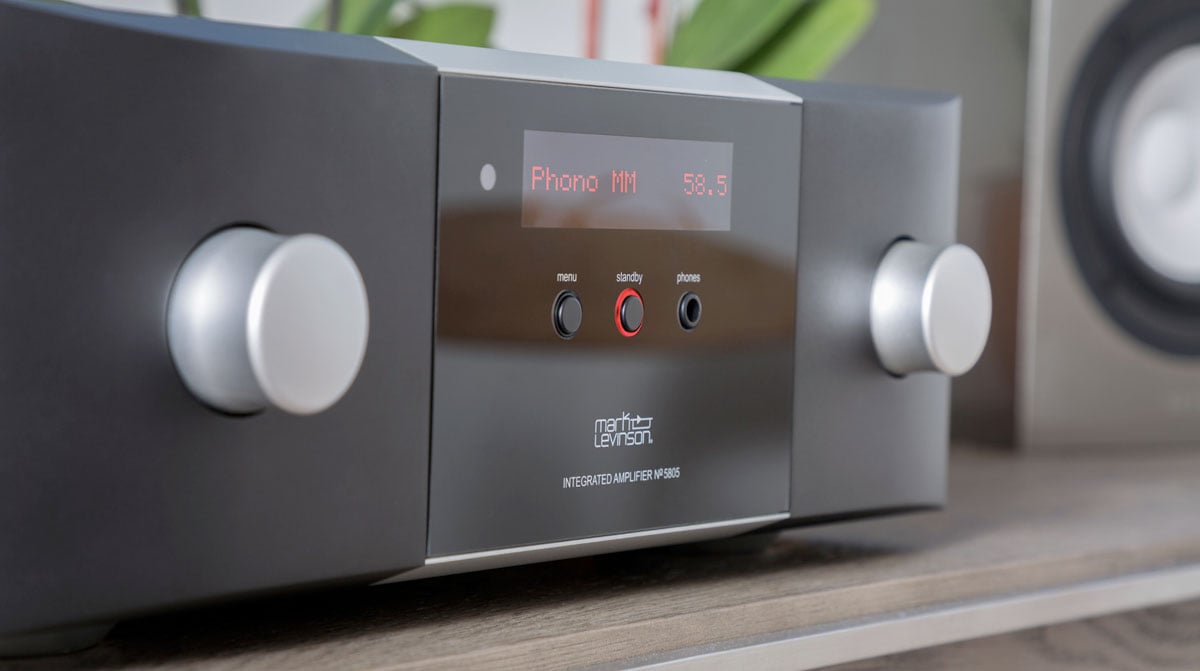
The display is another classic Mark Levinson touch. Ever since the first 300 series products from the early ‘90s, Mark Levinson has used red LED’s in their displays. The red LED’s contrasting with the black and silver is beautiful. While our descriptions can give you an impression of how well made these integrated amplifiers are, seeing one in person is a whole different story. With these new products, Mark Levinson is continuing the tradition of great American craftsmanship and in the case of these two new models, bringing it down to a lower price point than in the past.
Build quality is first class, but we should warn you, getting this integrated amp into its spot on your shelf will likely take another set of hands as it weighs in at 62 pounds! If you are like us and feel inclined to pop the top cover off to look under the hood, you’ll see a massive ultra low noise toroidal transformer in the center, flanked with two huge banks of heat sinks for its power amp section. If you appreciate great circuit designs, you’ll be impressed with the board layout of these integrated amps as well. The top panel is well vented and beautifully sculpted to allow the heat sinks to do their job.
The № 5805 and № 5802 are exactly the same from a power amp standpoint, with the № 5805 adding analog and phono inputs. Both are rated at 125 watts per channel across the full audio spectrum. This is probably one of the most conservative 125 watts we have ever seen as the model we tested was able to drive just about anything we threw at it!
Features & Technology
These two new amps are packed with a great input set and technology found in Mark Levinson’s much more expensive products.
The № 5805 gives you both analog and digital inputs. You’ll get a balanced analog in, two RCA analog inputs, a super flexible phono input, USB for computer audio, two toslink digital, and one coax digital input. In addition, you have the ability to stream via Bluetooth AptX-HD. RS232 and Ethernet jacks are available for control plus the Ethernet connection gives you access to set up via a web based application. You’ll also find a pair of RCA analog audio outputs. These could drive a bigger power amp later or a subwoofer. These outputs are variable. There is also the option of a home theater bypass, which is a feature we love at Audio Advice. It lets you connect your main 2 channel HiFi speakers directly to the № 5805 for pure sound, yet route the signals from a surround sound receiver or processor through the № 5805 for home theater use.
The phono stage is particularly impressive. To avoid any switching noise there are separate connections for moving coil and moving magnet. On the back panel are dip switches to adjust the loading for MC from 1000 ohms to 37 ohms. The moving magnet section allows you to adjust capacitance from 20pF to 170pF.
Finally the rear panel includes a trigger loop and an IR input. We also like the fact these amps come with a three pronged AC connection. We’ve noticed many products dropping the separate ground and prefer this.
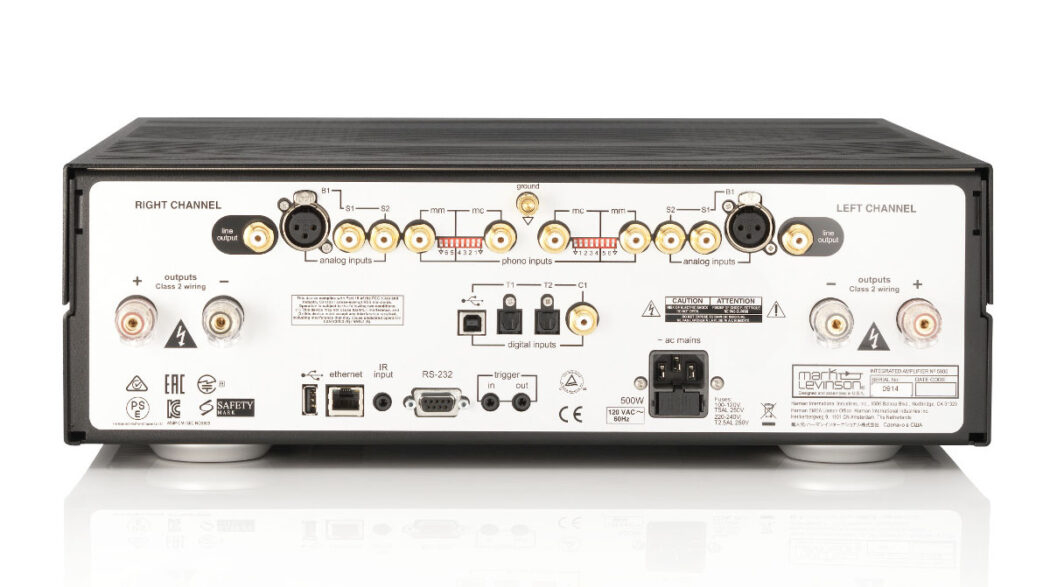
The № 5802 does not have any of the analog inputs, but adds a fully balanced digital input and a second coaxial digital input for a total of 6 digital inputs. You do loose the home theater bypass option with the № 5802 since it has no analog.
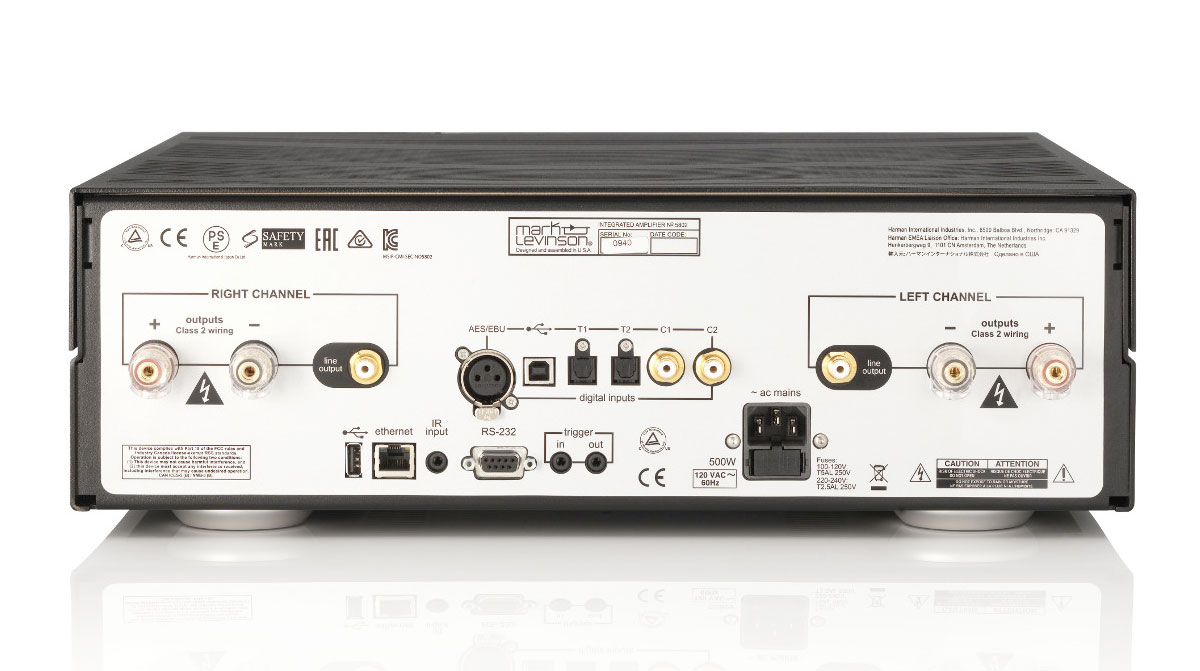
Our only gripe feature-wise is we wish these units had a built in steamer. In talking with the people at Mark Levinson, they informed us it would add at least another $2,000 to the price, so we can see why they left it off. Most people getting products in this category likely already have a streamer they can feed to any of the digital inputs on the unit.
The included remote control somewhat mimics the front panel of the integrated amp. Like Mark Levinson remotes of the past, it has some heft and feels quite substantial. In a good sign of the times, the Ethernet connection not only allows most home automation control systems to talk to the amp, but also will allow you to do future software updates on the integrated amp.
The setup menu is easy to navigate and gives you several options to personalize your set up. You can name inputs, adjust input offset volume to volume match everything, set turn on volume level, maximum volume level and more. It is about as flexible as anything we have seen.
Mark Levinson built their brand over the years on the supreme audio quality of the preamps and amplifiers, and then set the world on its ear with their digital technology. With these new integrated amps, you get the best of all three Mark Levinson worlds, rolled into one beautiful package.
On the digital side, Mark Levinson calls their DAC’s, PrecisionLinkII. These are the latest ESS Sabre 32 bit DAC’s. Mark Levinson employees a jitter elimination circuit and uses a fully balanced discrete current-to-voltage converter. As with many ultra high performance products in the digital realm, they have found the support circuitry around the DAC’s can make a huge difference in the ultimate audio performance. Mark Levinson’s decades of power supply experience give them an edge up in this domain and it certainly shines through in the sound we heard from these new integrated amps.
The USB input supports up the 32 bit/384kHz resolution on the PCM side and up to 11.2MHz DSD files, enabling it to play just about any type of audio file available today. As an added bonus, full MQA (Master Quality Audio) decoding is in both units.
If you read our review of the Mark Levinson 519, you have probably started to notice, these integrated amps share many of the digital technology found in the 519, which more cost effective support around them.
The Mark Levinson № 534 power amplifier is the amp of choice for a lucky few of our resident audio gurus at Audio Advice. Much of the technology in the power amplifier sections of the № 5802 and № 5805 are directly descended from the № 534.
As you’ll see, like we did, when you pop the cover, the centerpiece of the power amp is an oversized toroidal transformer. The left and right channels have individual secondary windings. This supplies the bank of 15 amp output transistors, 6 per channel. Four large caps per channel give this amp huge current reserves. In the audio world, the perfect power amp would double its power as you went from 8 to 4 to 2 ohms. So an amp rated at 125 per channel into 8 ohms would do 250 into 4 and 500 into 2. Most amplifiers on the market never even come close to this and many would catch on fire if you connected them up to a 2 ohm load. The № 5802 and № 5805 are both rated at 125 watts per channel into an 8 ohm load and almost 250 into a 4 ohm load. While Mark Levison does not give a spec for a 2 ohm load, they are stable driving one. What all of these numbers translate into is a power amp section with authority. When you connect your speakers up to an amplifier like this, it's similar to the feeling of sitting behind the wheel of a very high powered automobile. Your speakers will have get up and go like you never imagined!
Moving on to the preamp section, we learned Mark Levinson pulled in a lot of technology from their highly acclaimed 500 series preamplifiers. The № 5805 uses Mark Levinson’s proprietary PurePath circuitry. All of the analog inputs are fully discrete, direct coupled and dual mono. This will translate into a complete lack of any noise. Your music should sound like it is coming from dead silence. Headphone lovers will appreciate the fact the headphone section has a unique design. There is no separate headphone amp inside, but a preamp output specifically designed to have enough current and power to drive any set of headphones and operate in pure Class A, the ultimate in power. A neat feature of the headphone jack is it remembers the last volume setting used, so when you plug in your phones, the amp mutes the speakers and sets the output to the last level. Pull the headphones out and the amp goes back to the previous level set for your speakers.
The phono stage uses very high quality components in this critical low level section. You’ll find precision resistors and polypropylene capacitors which give it a very pure, warm sound. A pretty neat feature included with the phono stage is an infrasonic filter. This is selectable in the set up menu and gives you the option of selecting a 20 Hz 6 db per octave filter. If your turntable is too close to your main speakers a filter like this can work wonders for eliminating acoustic feedback.
When you consider the feature and technology set, along with its beautiful sound, you might think a Mark Levinson product like this would be $15,000 or more. While $7,000 to $8,500 is by no means inexpensive, these new amps from the high end audio world perspective could be considered a bargain!
Performance
As usual when testing higher performance products, we tend to go overboard in our testing. This time we really jumped off the deep end. One of our reference audio rooms in our Raleigh, North Carolina, location has an amazing set up. We have the Revel Salon 2 speakers, a Mark Levinson № 519 digital preamp, and the top of the line Mark Levinson stereo power amp, the № 534. Each of these pieces is $20,000 or better. The Revel Salon 2 is probably the most difficult to drive speaker in our store with its low efficiency rating but with the right power, they sound amazing.
Well, we decided to just pull out the $40,000 top of the line Mark Levinson gear and drop in the $7,000 № 5802 integrated amp. We were actually testing the same prototype piece we had at our Music Matters event as these are not shipping yet, but we wanted to go ahead and do a review since we were able to get one of these again before its release. We will update this section once we get our new demo in with the phono and analog sections.
We connected up one of our favorite CD players for the money, the Rega Apollo and a Roon endpoint streamer (Bluesound Node II) to the № 5802 for testing. Both of these went into digital inputs on the integrated amp.
Our first impression, after just having played several cuts on the big rig, was there was less impact and dynamics with the integrated compared to the big separates. The bass did not go as deep to our ears and the soundstage was not as wide. We did feel the integrated had that classic Mark Levinson ultra smooth sound where all of the details are still present.
Then we did a gut check and considered the rig we were comparing this to cost almost six times more than the № 5802 integrated amp. So we tried to erase the big rigs sound from our audio memory and just listened to the system. An interesting thing happened. We found ourselves really enjoying the music and diving into both old and new music as we used Roon to explore things. If you want to learn more about Roon, which is a music software service, check out our review here.
The great news is the № 5802 had no problem at all driving the Revel Salon 2’s to high levels with no sense of strain. That is quite a task. Playing a high res file of Jackson Browne’s “Cocaine” from Running on Empty revealed a huge soundstage with every instrument well separated. Next up was David Crosby and Steve Nash’s “Lay Me Down” from the Crosby & Nash album released in 2004. This is another cut with a big soundstage with a very full deep bass line. If your amp is not able to control the speakers, it can sound a bit sloppy on the low end. The № 5802 played this with flying colors, especially the part about 90 seconds in where the harmonies (on a great system) burst out from the sides of the speakers. We then tried Shelby Lynne’s “Just a Little Lovin.’” This one sounded just amazing with her voice dead centered and floating right in front of us.
We repeated all of these tracks and more using the Audeze LCD-3. The № 5802 drove them with ease and boy oh boy, what a smooth and open sound we heard with these!
Our conclusion, after all of our testing, is this integrated amp just lets the sound come through without adding any flavor of its own. It’s pure, full, very dynamic for its price, and plays music with no sense of strain. Is it as good as the $40k stack we compared it to? No, but for the cost and the fact you are getting Mark Levinson built quality, it's quite miraculous.
Overall Recommendation
At Audio Advice, we have been fans of Mark Levinson gear since the early 1980’s, so we tend to get a little sentimental over their gear. The № 5802 and № 5805 bring in a new era for Mark Levinson as they take the point of entry for a Levinson system out of the audio stratosphere. If you are serious about your 2 channel HiFi system, you will be astonished at how these will change your system. Your speakers will be far more dynamic than you have ever heard them with the music emerging from a totally silent background. We do feel you should spend the extra $1500 for the № 5805 for its future option value for both home theater and analog inputs unless you are pure digital and plan to stay that way.


